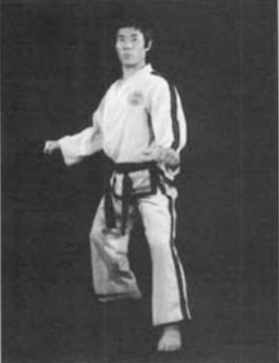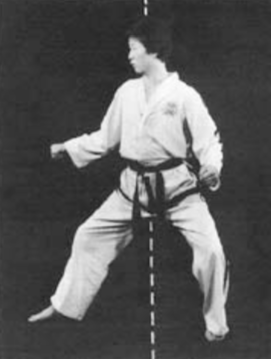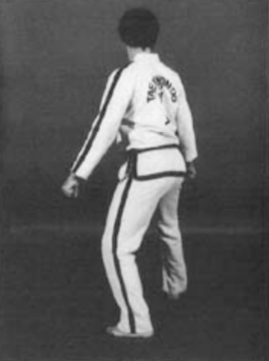L-Stance / Niunja Sogi
This is widely used for defense, though used in attack as well. The front foot is readily available for kicking with a slight shift of the body weight and with the advantage of half-facing as well as body shifting.
- Move one foot to either the front or rear to a distance of approximately one and a half times the shoulder width from footsword of the read foot to the toes of the front foot, forming almost a right-angle. It is recommended that the toes of both feet point about 15 degrees inward, placing the front heel beyond the heel of the rear foot by about 2.5 centimeters to gain better stability.
- Bend the rear leg until the knee cap forms a vertical line with the toes, bening the front leg proportionally.
- Keep the hip aligned with the inner knee joint.
- The ratio of body weight is about 70 percent on the rear leg and 30 percent on the front leg.
When the right leg is at the rear it is called a right L-Stance and vica-versa. It is always half-facing, both for attack and defense.
Feet Positions

Top Tips
There are a number of common mistakes when making a L-Stance. These are:
- Feet are too close together - position is less stable.
- Not enough weight on the rear leg - remember the weight distribution is 70/30 so if a student holds this position for a long time they should start to feel their rear leg getting tired first.
- Both legs are straight - less stable and makes it hard to kick with the front foot.
Front View

Side View

Centre of gravity
Rear View

Incorrect - Too Far Back

The bottom is pushed too much to the rear making it hard to block effectively to the front.
Incorrect - Too Wide

Feet are too wide apart making it hard to raise the front foot to kick.
Incorrect - Feet Position

Toes are pointing outward making position unstable and eaily toppled.